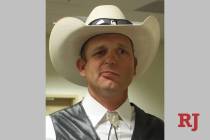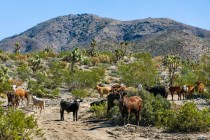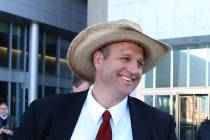Next big battle for Nevada ranchers could come from sage-grouse protections
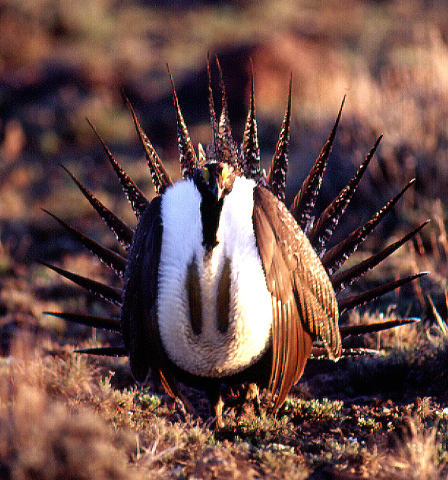
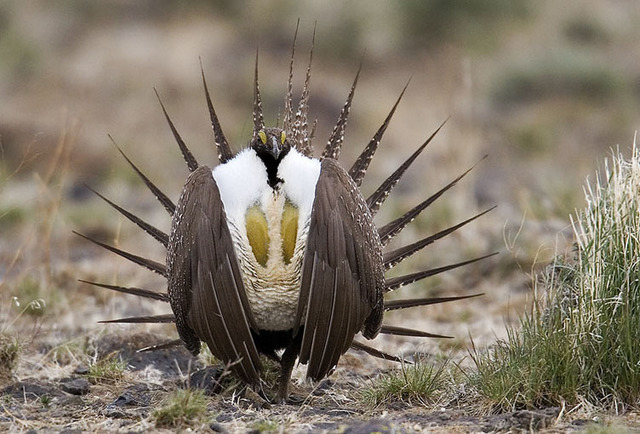
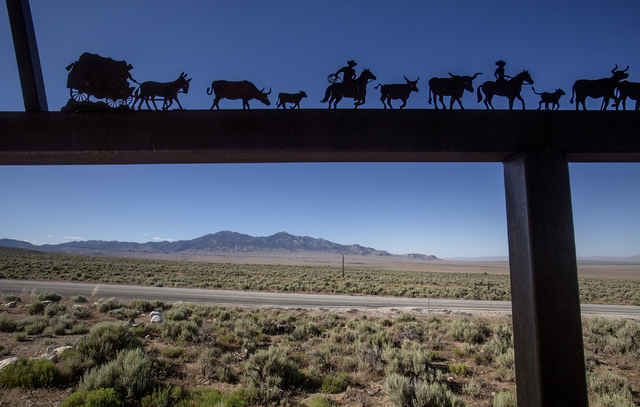
CARSON CITY
The long-term survival of a large ground-dwelling bird that lives in sagebrush throughout much of Northern and central Nevada could soon become the next big battle between ranchers and the federal government.
Rather than the recent isolated case involving Bunkerville rancher Cliven Bundy, the decision on whether to name the greater sage-grouse a threatened or endangered species could harm economic activity across 11 Western states, including 17 million acres in Nevada.
Such a designation by the U.S. Fish and Wildlife Service would potentially pit the bird and its surviving habitat against some of Nevada’s biggest industries, including ranching, energy development and mining.
It would make the battle over Bundy’s cattle and his use of the U.S. Bureau of Land Management grazing lands pale by comparison.
U.S. Sen. Dean Heller, R-Nev., made the point in a recent interview along with U.S. Sen. Harry Reid, D-Nev., on a Las Vegas news program that touched on the Bundy situation.
In remarks on “What’s Your Point” on KSNV-TV, Channel 3, Heller said cattle ranchers have seen the lands they can graze on reduced by half over the past 30 years.
“Wait till they list the sage-grouse,” he said. “I’ll tell you, every cattleman here knows that their life span, their occupation, is short. Wait till the sage-grouse comes.”
Reid countered that climate change, which has decimated the range with wildfires, is why there is less grazing land available in Nevada.
REPORT: SURVIVAL THREAT
The bird faces a threat to survival due to habitat loss and fragmentation from wildfires, energy development and invasive plant species, the wildlife agency said in a report released in 2013.
The birds, which can stand 2 feet tall and weigh as much as 7 pounds, occupy about 56 percent of their historical range in Nevada, which includes much of Northern Nevada and central Nevada. There are also populations along the Nevada-California border.
The Nevada Department of Wildlife estimated their numbers in the state at 85,778 in 2012, while the 2013 number is 10 percent to 15 percent lower due primarily to drought conditions.
The birds, indigenous to the Western United States and southern Canada, are known for their complex courtship ritual, which involves the males displaying their plumage in barren areas called leks to attract mates.
The U.S. Fish and Wildlife Service determined in 2010 that the sage-grouse deserved listing but was precluded from doing so because of more pressing priorities.
A decision on how to proceed must come by September 2015 as a result of a court-ordered settlement between the agency and environmental groups.
Concerns over the potential listing prompted Nevada and other Western states to propose conservation plans to protect sage-grouse habitat, which often coincides with cattle grazing areas.
The Nevada Agriculture Department reported in 2011 that cattle and calves were Nevada’s leading agricultural industry, totaling $732 million, or 62.5 percent of all farm receipts. The agency said there were 470,000 cattle and 29,000 dairy cows in Nevada in 2012.
Gov. Brian Sandoval issued an executive order in 2012 creating an advisory council to work on the issue, citing concerns over the economic impacts of such a designation.
“Listing the greater sage-grouse as a threatened or endangered species under the Endangered Species Act would have significant adverse effects on our state,” he said.
Nevada issued its initial plan later in the same year, but it is now undergoing revision before being submitted to the U.S. Fish and Wildlife Service in September in an effort to head off a listing. The submission will become Nevada’s 2014 state plan on how to address the health of the species.
Despite the declining populations, the sage-grouse is a game bird and hunting is allowed in Nevada in areas with sufficient populations. Seasons are limited to late September and early October. As part of the brief season, hunters provide the state Wildlife Department with a wing from each harvested bird, which has given the agency a database to assist it in monitoring the birds. In 2010 7,355 birds were harvested out of an estimated fall population totaling 141,996.
State wildlife spokesman Chris Healy described the bird’s taste as “gamey chicken.”
‘COULD DESTROY RANCHING’
Former state Sen. Dean Rhoads, who has worked as a rancher on his Tuscarora spread since 1966, called the potential listing a serious threat to ranching and mining.
According to the Public Lands Council, a group representing cattle and sheep producers who hold public lands grazing permits, and on which Rhoads serves: “A listing could destroy ranching both on public and private land. Once a species is listed, anyone can sue to put a stop to your everyday ranching activities in ‘critical habitat’ areas — simply by claiming that you are ‘modifying’ the bird’s habitat.
“Even where grazing is allowed to continue, (the Fish and Wildlife Service) will put a whole new layer of regulation on your allotment — regulation that you may not be able to afford.”
But unlike battles over the listing of the spotted owl in Oregon and the desert tortoise in Southern Nevada, both coming in 1990, Rhoads said those opposing a listing are better prepared with scientific backing to make their case.
“It has been a wake-up call for us,” he said. “We’re trying to follow the recommendations that scientists have suggested, such as doing rotational grazing.”
Rhoads said there are fewer sage-grouse today than years ago, and human development is a likely contributing cause. But expanding wild horse populations, which the BLM has so far failed to address, contribute to the bird’s decline as well, he said.
Grazing and the sage-grouse can coexist, Rhoads said.
The birds rely on sagebrush both for food and shelter and typically seek out water each morning. Predators include hawks, coyotes and badgers. Ravens eat the young and the eggs before they hatch.
Ron Torell, president of the Nevada Cattlemen’s Association and an Elko County rancher, said a listing “has the potential to be one of the biggest impacts on rural Nevada in my lifetime.”
“The livestock industry fears that a listing would make our industry an endangered species as well. It has the potential to bring rural Nevada to its knees.”
Torell said he supports some protections for the birds, and noted voluntary efforts are underway to improve habitat and make other changes to improve its chances of survival.
“We are doing everything we can to avoid the listing. But we’re not going to turn it around in just a few years. It will take time and we need some balance.”
SAGEBRUSH ECOSYSTEM PROGRAM
Nevada’s response to the sage-grouse issue is being handled by the Sagebrush Ecosystem Program formally established by the 2013 Legislature to head off a listing of the bird.
Program Manager Tim Rubald said he and his staff of four answer to the 15-member Sagebrush Ecosystem Council, first created by Sandoval’s 2012 executive order.
The updated state plan now being developed would create a credit and debit system to ensure there is no net loss of population or habitat, Rubald said. If a proposed development would damage habitat, there would be an offsetting improvement elsewhere to compensate, he said.
The offset would have to be created before a disturbance would be allowed. The idea is to allow development to occur while still protecting the sage-grouse, Rubald said.
The focus of the state’s efforts is the greater sage-grouse found in Northern and central Nevada, he said. There is another distinct grouse population in western Nevada and eastern California that is on a separate timeline for action, Rubald said.
The 15 initial draft plans for saving the sage-grouse in different regions of the West, developed by the BLM, were not well received by the environmental group Defenders of Wildlife.
“In some cases, the plans did not adopt the strongest conservation measures for sage-grouse, even when doing so would have only minor impacts on future land use and development,” the group said. “For example, some plans did not propose restrictions on natural gas and oil drilling in essential sage-grouse habitat, opting instead for more accommodating standards — even where there is little potential or interest in developing the resources.”
U.S. Rep. Mark Amodei, R-Nev., recently introduced a bill that would require federal agencies to fund conservation efforts.
“The No. 1 threat to sage hen habitat in Nevada is wildland fire,” Amodei said. “Yet the federal land management agencies, who own the vast majority of the habitat, have not prioritized funding needed to undertake the necessary work to conserve the resource and prevent the ESA listing.
“Instead, they point fingers in an attempt to saddle state and private landowners with the responsibility for funding projects that are absolutely the responsibility of the federal government,” he said. “This is nothing short of extortion and sadly adds another chapter to the war on the West story.”
Contact Capital Bureau reporter Sean Whaley at swhaley@reviewjournal.com or 775-687-3900. Find him on Twitter: @seanw801.




